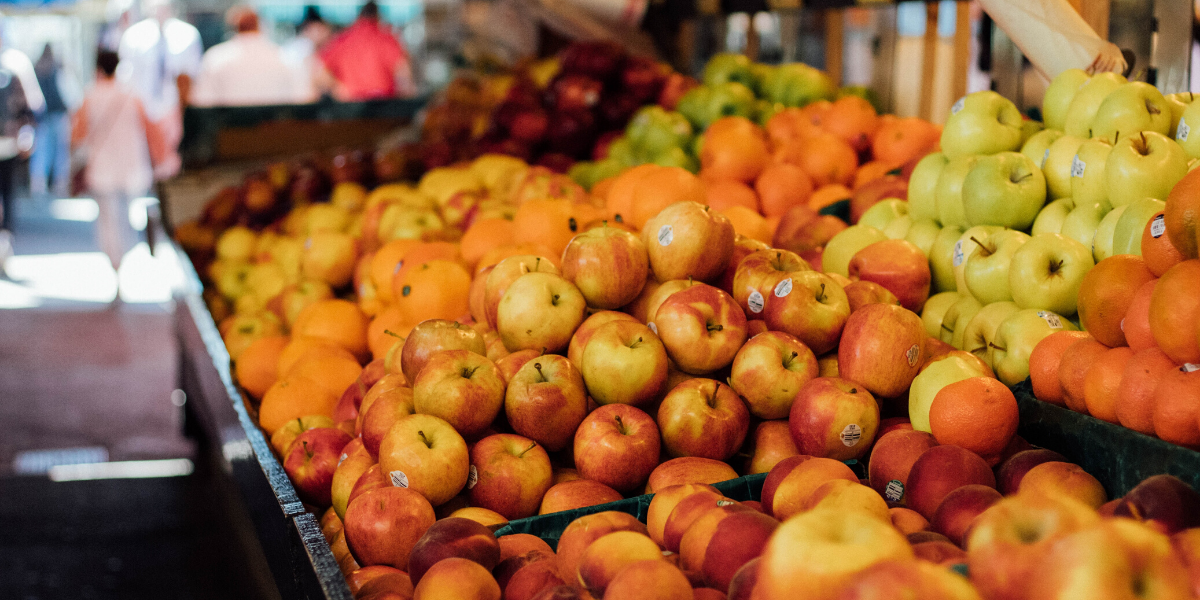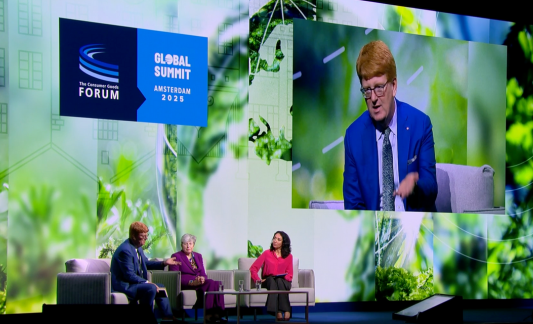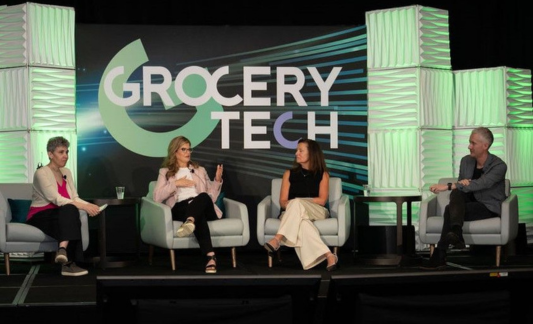Help Isom IGA recover from devasting floods

9 min read
IGA CEO John Ross: COVID-19's Effect on Independents Now & In the Future
Written by California Grocer
Jun 10, 2020
This interview was originally published in California Grocer, the California Grocers Association's flagship magazine.
For decades, IGA has been synonymous with community-based retailing and a champion of independent operators worldwide. Today, the company and its retail members, like many others, are facing the challenge of operating during the worst pandemic in a century and confronting what may be a new era for retailers in a post-COVID-19 world.
CGA met with CEO John Ross recently to discuss IGA’s retail realities in Asia and the U.S., current solutions, and what the future may hold for the company, its retailers, and the entire industry.
California Grocer: How extensive is the IGA banner in China?
Ross: We have a little over 1,000 stores, but there’s a great disparity. In China, only about nine owners operate 1,000 stores—basically they are large chains. But in the U.S., we have about 1,300 stores and hundreds of owners.
CG: Is there a variation in store size and geography?
Ross: Absolutely. On one end, there are 5,000 square-foot community stores all the way up to mall-based units at several hundred thousand square feet that are like multi-level department stores—more like a Super Target. And the majority of stores are suburban, semi-suburban, and semi-rural.
CG: Including Wuhan?
Ross: Wuhan is our headquarters, and we do have stores there.
CG: Since China was the epicenter of COVID-19, what was the initial impact?
Ross: We didn’t close any stores, but we did limit hours. It was imperative to redeploy labor to restock and clean. IGA retailers in the U.S. also had to shift hours to keep the stock moving.
CG: It seems there’s a lot of similarity between China and the U.S.
Ross: Yes, but at different times. The China outbreak started in January, but the same things happened in March and April in the U.S. Similarly, we saw a huge sales increase early on at some stores in China with people hoarding shelf-stable foods and cleaning products—way above normal consumption patterns.
CG: How involved was the Chinese government?
Ross: The stores had to decide how to operate in this environment in advance of what the government would say. In hindsight, no one was as prepared as we should have been. However, we could see the train coming. Early on, we implemented policies on wiping down surfaces and posting greeters at the front door to issue masks to associates and customers.
CG: Did you see a similar explosion in online orders when the outbreak started? What impact did it have on in-store sales and traffic?
Ross: Both online and in-store sales are are up. Our stores outside the U.S. are more mature in terms of e-commerce. So many of them have had online alternatives for a while. That said, when you have a 300-400 percent increase in demand, you need the e-commerce infrastructure to handle it. In the first few weeks we were trying to figure things out and probably left some volume on the table. But there’s no evidence to suggest that in-store sales were down as a result of online revenues. On a positive note, we think the majority of online shoppers were new shoppers.
CG: What about supply chain issues in China?
Ross: Same as you see here. We have very modern food distribution networks in other countries designed to deal with variances like a sales spike or some other temporary situation. However, manufacturers can only run so much safety stock, which is when we started to see shortages.
CG: Did that mean limiting consumer purchases?
Ross: In some cases like disinfectant, wipes, beans, and rice. In some markets it was a directive. Others simply did it as a courtesy to all shoppers. Some of those standards were relaxed as the crisis evolved and the availability of supplies increased.
CG: But you were also able to expand the supply chain?
Ross: Yes. In the early weeks of the program we began to get into secondary sources of supply like commissaries, schools, hotels, and restaurants. Some odd SKUs showed up in packaging that you wouldn’t usually find in supermarkets, but shoppers bought them.
CG: Are you pushing for improvements in the U.S. supply chain to avoid scenarios like this?
Ross: We’ve learned a lot more about our entire supply chain from the farmer to the store in the last few months. Clearly, there are many stops along the way where demand or illness can disrupt the process. But let me just say that the U.S. supply chain is nothing short of miraculous. Companies are working 24-hour shifts, and supervisors are working 14-hour days to meet demand. The good news is we can look at our analysis of sales in China as a predictor for what’s likely to happen a month from now domestically. When we analyzed China sales and pasted them on top of U.S. sales, there’s a remarkable correlation to shoppers’ response to the virus in China and here in terms of runs on products like frozen and shelf-stable.
CG: Let’s focus on the U.S. now. How effectively have independents approached the situation?
Ross: We are not an authoritarian government like China with de facto guidelines and directives. So independents judge for themselves what works best for their stores. But because state guidelines are all over the board, what you have to do in densely populated areas like New York or Chicago may be completely different than what you have to do in the Carolinas. Many retailers have not been sure of what policies to put in place in terms of masks, limiting shopper purchases, or limiting the number of shoppers in the stores at one time.
CG: How has IGA Corporate been involved?
Ross: We don’t often direct. Our job is to support and help so we’ve been sharing our experiences in China with independents, including best practices on how to grow sales, protect shoppers and associates, as well as our brand. These policies worked and helped keep all U.S. stores open. We simply passed along some strict guidelines and said that if [retailers] follow them, everybody will be safe.
CG: Have retailers been diligent in following the guidelines?
Ross: I’m confident they are.
CG: Have you worked with them to obtain federal funds that have been available to some businesses?
Ross: Well, we make resources available through our IGAALERT.com website. It’s where we post all COVID-19 information so retailers won’t be confused about what they are supposed to do. We’ve also partnered with NGA and FMI on webinars, and we are doing weekly calls with our advisory board to discuss issues.
CG: Are you working more closely with suppliers and wholesalers and what support are you getting from them?
Ross: As close as we can. We’ve talked about the work we’ve done in China, and I think it’s helped them galvanize their own teams and apply insights to their own businesses.
CG: I know you were preparing to roll out a private label redesign and expansion. What’s the status of that?
Ross: Product is rolling into stores as we speak. But we’ve delayed the big marketing push during COVID-19 so our retailers could focus on operations. Now we're planning the full label relaunch for the fall of this year.
CG: How are private label sales?
Ross: We expected a good year. The business is up dramatically from last year. But we don’t want to launch a major campaign only to have it get lost in all the COVID-19 stuff. Since a vaccine isn’t likely any time soon, the big question is what’s happening with the average American over the next six to 12 months. The reality is we’re going to have a lot of financially stressed shoppers trying to feed their families.
CG: Private label is probably well-positioned to deal with that.
Ross: We believe that thousands of Americans bought private label simply because it was in stock when there were shortages. But they’ve since discovered it’s a great product, and they’ll sometimes stay with it because of financial insecurity. But it means retailers will have to make sure the deals are available and private label programs are great.
CG: It’s hard to conceive at this point. But what’s a post-COVID environment look like for independents?
Ross: I think we should again look at China. The restaurants are open, but they’re empty because the largest segment of the population—older consumers—is still afraid to go out. Also, about one-third of the restaurants there didn’t reopen because they didn’t have the cash flow to keep the business going. I believe local products—from produce, meat, and dairy to local specialty products—will be critical as a resource for consumers who need family meals and may still feel uneasy about food safety along the supply chain. The more local your food, the fewer touchpoints it has along the way. Having quality local food options will end up serving all independents well as long as we keep up our service. Frankly, it’s a great time to increase our share.
CG: There is the question of online shopping and how to get people back into the stores.
Ross: It was already growing by a high percentage in the U.S., but off a small base. I still think the U.S. is probably five years behind most developed nations in this area. However, COVID-19 proved to be a huge accelerant because people have been afraid to shop the open stores.
CG: And moving forward?
Ross: Because of inertia, some shoppers may never go back to the stores, and everyone is looking at the cost structure of e-commerce orders. It’s great that the average online ticket is three times the normal, and the margins tend to be slightly better. But none of us have figured out the pricing model yet.
CG: Then now is the time for independents to increase their online capabilities?
Ross: If you look at what’s likely to happen, there’s going to be a cycle of episodic reinfections. We're already seeing it. This will likely lead to periods of openings and closures by marketing area and by county. Any retailer that’s not doing e-commerce should be, and those with a program should be accelerating it. We believe that 65 percent of e-commerce growth is coming from new shoppers.
CG: Do you foresee long-term changes to the store itself?
Ross: Coming out of this, we have to figure out how things like salad bars and self-serve areas will have to change. People are nervous about others touching their food, and we may have to shift from ready-to-eat to ready-to-cook meals. That’s great for IGA since we have a meal kit program in some of our stores. Products like this may change the nature of how meals are served and keep shoppers in the stores.
CG: What else might change?
Ross: We are learning that we can run a grocery with fewer items. The long-term impact will be SKU rationalization.
CG: Could that benefit private label?
Ross: Maybe. But manufacturers have really taken the reins. A great example is frozen. The category had been down for several years, and last year it was up. Private label didn’t drive this. It was innovation, new formatting, and on-trend packaging and flavors that got shoppers more interested in the category.
CG: How do you think that will shake out?
Ross: It might be better for everyone if a retailer can operate an aisle with 80 percent of what they had before. It’s easier for the consumer, it’s easier for the manufacturer to keep one line running longer at a lower cost, and easier for me to manage my inventory.
Our average store has about 38,000 SKUs. The average Trader Joe’s, for example, has about 6,000. Look at the spread and see who has higher profitability per square foot and a higher turn on invested capital. We’ve all been chasing choice, which may not have been in our best interest long term. It may be a good idea to redeploy just 20 percent of inventory dollars.
CG: What might be the result?
Ross: If I take 200 SKUs out and put in two that are more productive and open up a market I never had before, I’m looking at real growth. I guess we’ll be much smarter about how to drive innovation in stores without having to fill every square inch.
CG: Does that mean a shift or decline in promotional funds?
Ross: Customers are going to need those funds next year more than ever before. My message to suppliers is whatever you’re going to spend, we need more. At the end of this, we will have pushed a lot more volume through our stores. But, our costs are way up. Will we end up making more money? Well, that’s still a jump ball. Our long-term goal is to lower the average food costs to our shoppers. We’ll do our part with private label. But manufacturers have to look at subsidies and promotions.
CG: What else can IGA do to promote lower-priced options?
Ross: At the end of the day, the cost of goods is what it is. Our wholesalers do a great job of negotiating on behalf of retailers. But the mass discounters like Walmart have an advantage because they can take lower margins on food and make it up in other categories like soft goods. It can feel like you’re constantly fighting a promotions game with one hand tied behind your back.
CG: But overall, you seem pretty positive about the future.
Ross: Consumers say they want fresher, healthier foods from local growers, and they want to trust their food—a trust that was accelerated by the virus. Last year IGA had one of the best years in its history, and I believe we will come out of this with an even stronger growth model. Shoppers know that we always have what they want.
You May Also Like
These Stories on From the Desk of
Jun 17, 2025 3:12:02 PM |
2 min read



No Comments Yet
Let us know what you think